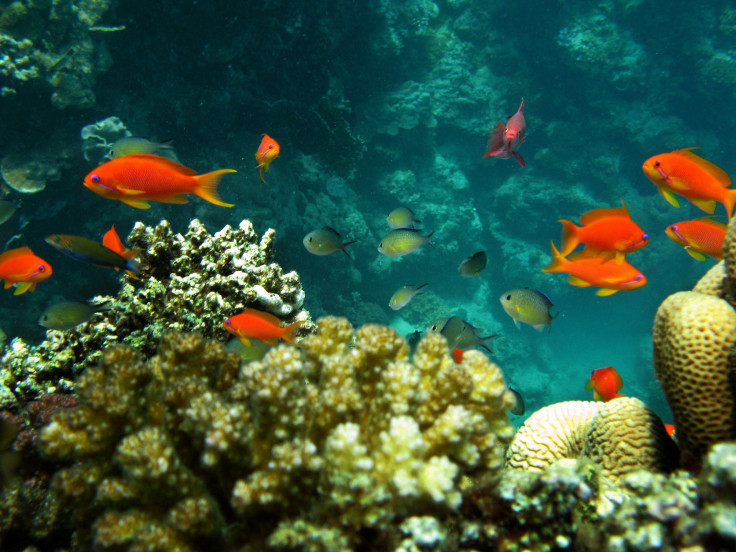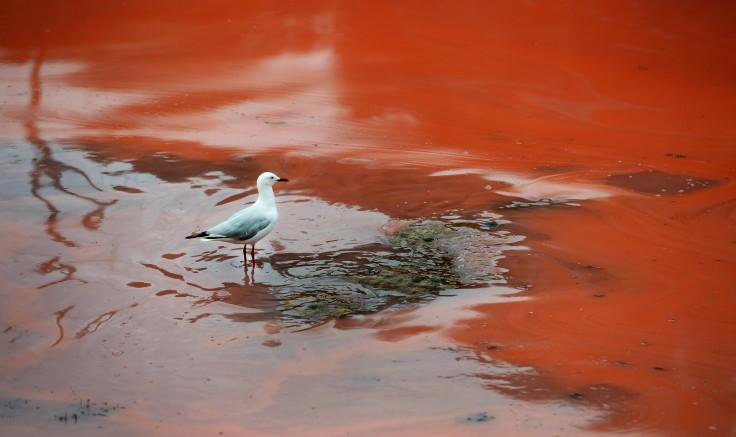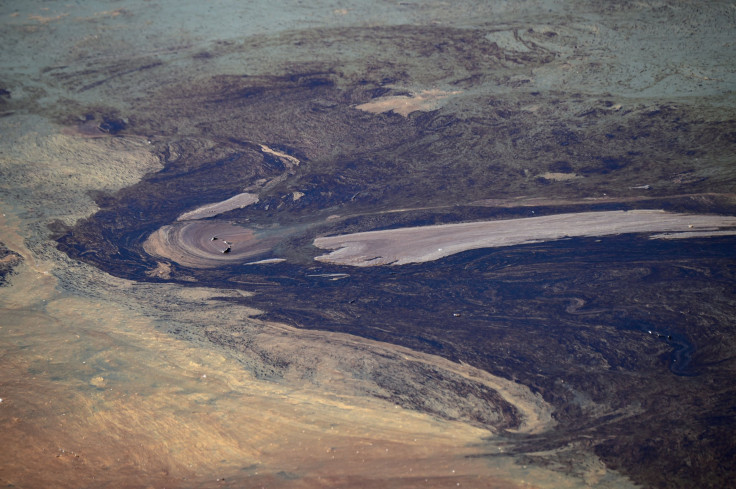World Oceans Day 2016: Five Threats To Sea Wildlife And Coastal Economies
Walk along virtually any beach or seashore, and you’ll likely encounter a post-consumer heap of plastic bottles, plastic bags, plastic toys and plastic constellations of white and blue bottle caps. Trillions of pieces of indestructible garbage are floating in the oceans, scientists estimate, and the armada of pollution is choking ecosystems, threatening coastal economies and battering coral reefs.
Keeping plastic out of the ocean is the main mission of this year’s World Oceans Day. Across the world, hundreds of cleanup events and activities were slated to take place Wednesday to commemorate the United Nations-recognized event.
Yet plastic pollution is only one in a long list of threats to the oceans, which cover nearly three-fourths of the Earth’s surface. Here’s a look at five challenges facing the Blue Planet:
1. Plastic Overload

Nearly 5.25 trillion pieces of plastic garbage, weighing roughly 269,000 tons, may be bobbing around the oceans, scientists from the 5 Gyres Institute found in 2014. The trash isn’t just unsightly — marine life, ranging from tiny plankton to ton-sized walruses, often ingest the plastic. If the affected wildlife don’t suffocate from it first, they often absorb the toxic chemicals into their bloodstream, which they can pass on to their offspring or seafood-eating humans.
Around 99 percent of the world’s seabird species — including penguins and albatrosses — are expected to suffer from plastic ingestion by 2050, according to a September study published in the journal PNAS. Already, 60 percent of seabird species have some kind of plastic in their gut, up from just a tiny fraction of seabirds in the 1960s, when single-use items and plastic packaging were still a rarity in the consumer landscape.
Microbeads, the tiny spheres found in facial scrubs, soaps and toothpastes, have also become meals for many sea creatures. In the U.S. alone, more than 8 trillion microbeads enter aquatic habitats every day, according to an October study published in the journal Environmental Science & Technology.
2. Warming Waters

Global average temperatures are steadily rising as countries continue to pump greenhouse gas emissions into the atmosphere. Sea surface temperatures have gained an average rate of 0.13 degrees Fahrenheit per decade since 1901, according to the National Oceanic and Atmospheric Administration (NOAA).
Much of that temperature gain has happened relatively recently, spurred by accelerated use of fossil fuels and widespread deforestation. Sea surface temperatures have been higher during the past three decades than at any other time since scientists began collecting reliable observations in 1880, NOAA said.
As oceans warm, Arctic sea ice is rapidly melting, causing sea levels to rise and putting coastal communities at increased risk of flooding or storm surge. Melting ice also threatens the homes of walruses, which typically ride on ice sheets in the shallow feeding areas of Alaska’s Chukchi Sea. Record-low ice levels in recent years have forced thousands of walruses to “haul out” on beaches, leaving the massive creatures hungry and in crowded spaces.
3. Acid Test

Rising carbon dioxide emissions don’t just boost ocean temperatures. They also tamper with oceans’ pH levels, making the water acidic and more hostile to marine life. Oceans so far have absorbed about one-fourth to one-third of all man-made carbon emissions, scientists estimate.
Along the U.S. coastline, local economies are already suffering the effects of more corrosive water. Taylor Shellfish Company, based in Shelton, Washington, has seen millions of oyster larvae die in its hatcheries, and seedlings, the next stage in oyster life, are struggling to grow. Shellfish industries from southern Massachusetts and Virginia to swampy Louisiana and southern Alaska are similarly at risk.
Yet coral reefs may suffer the most from warming and acidifying waters, which stress the coral and turn them into lifeless skeletons, an event known as “coral bleaching.” Reefs near at least 38 countries and island groups are currently experiencing the longest and most widespread coral bleaching event on record, NOAA’s Coral Reef Watch found in a new report.
4. Toxic Blooms

Slimy algae blooms are cropping up more frequently in oceans, lakes and ponds, a trend that threatens drinking water supplies and deprives local ecosystems of life-sustaining oxygen.
Scientists point to a mix of reasons for the increasing incidents of these toxic blooms: Farmers are relying more on “dissolved phosphorous” fertilizers that wash into surrounding waterways, where they nurture algae blooms. Industrial-scale agriculture is also producing industrial-scale manure, which also finds its way into the water and feeds the blooms. As global warming raises the likelihood of severe and frequent rainstorms, over-saturated sewage systems are dumping more nutrient-rich runoff into streams and oceans.
5. Oil Spills

Offshore oil and gas operations account for an increasing share of U.S. and global energy supplies. But occasionally waterborne rigs can explode or pipelines can leak, dumping toxic liquid into the water and destroying wildlife and coastal economies.
BP’s Deepwater Horizon disaster in 2010 left 11 workers dead and sent millions of gallons of crude spewing into the Gulf of Mexico. Years later, Louisiana business owners, self-employed fishermen and their families are still suffering the economic fall-out from destroyed seafood populations and declining tourism. Marine creatures like dolphins, sea turtles and fish still haven’t fully recovered, the National Wildlife Federation found in a 2015 report.
In California, a ruptured pipeline near Santa Barbara spilled more than 140,000 gallons of crude into the Pacific Ocean. Shore birds and other wildlife were killed or seriously injured, and popular beaches remained closed for months as cleanup crews removed slick globs of crude from sand and water.
© Copyright IBTimes 2025. All rights reserved.





















